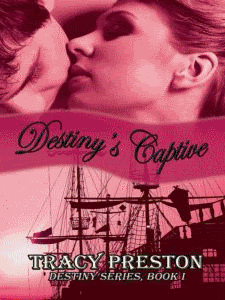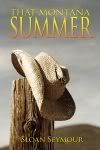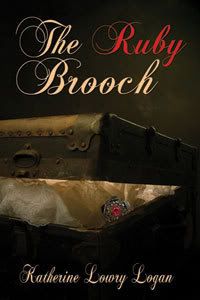By Teresa J. Reasor
According to Ansen Dibell in his book, Plot, How to build short stories and novels that don’t sag, fizzle, or trail off in scraps of frustrated revision-and how to rescue stories that do., plot is a verb. The struggle a writer goes through to hew his plot is certainly worthy of verbal recognition. And the story itself should be as well.
The important points in your story are the Hook, the inciting incident that starts the ball rolling, and the Climax, the moment in your story where the bad has become as bad as it can get. The climax should be the point where the heroine/hero prove themselves worthy of their heroine/hero status. Everything between these two points, the hook and the climax, should build from one to the other.
Most of us are familiar with the Story Arc that some plots follow. This structure divides a plot into increments between the Hook and the Climax in this manner:
1. Hook, Call to Action
2. Choice, Bad Things Happen
3. Gray Moment
4. Black Moment-Crisis
5. Climax
6. Resolution
The above structure is based loosely on The Hero’s Journey by Christopher Vogler which is:
1. Ordinary world
2. Call to Adventure
3. Refusal of the Call
4. Meeting the Mentor
5. Crossing the First Threshold
6. Tests, Allies, Enemies
7. Approach to the inmost Cave
8. Ordeal
9. Reward (Seize the Sword)
10. The Road Back
11. Resurrection
12. Return with the Elixir
I much prefer the Stairway to Suspense structure which is:
1st step: The hook (the Call to Action.)
2nd step: The decision or choice the heroine/hero makes that turns the story in the direction it will travel. This choice is based on some character flaw that guides the character’s motivation for the choice.
3rd step: The choice creates obstacles to solving the situation.
4th step: The character makes another choice which causes more problems and the situation worsens.
5th step: The more choices a character makes the more obstacles will be thrown into his/her path.
6th step: The climax where the greatest obstacles and the greatest attempts must be made to overcome the situation created in the hook.
7th step: The resolution, which is short, sweet, and should tie up all the loose ends and leave the reader feeling completely satisfied.
During the building from Hook to Climax, the plot should be firmly held in the writer’s mind and everything that happens should be working toward that climatic point of discovery, self-understanding, or solution, or all three.
There are many structures a writer may use to create his/her plot.
The Linear Plot structure is one that moves from the inciting incident (Hook) through a sequence of events to the climax in a seemingly straight line. Sound boring? It shouldn’t be if we do our job as writers. In a linear plot the main plot takes precedence over other things in the story. Between the hook and the climax you can have as many subplots, twists, and turns as your story needs or will allow. But by the moment of climax the subplots should be tied off leaving the hero and heroine to bond together and face the climax together. Most contemporary romances and romantic suspense follow this kind of plot structure.
In a Braided Plot there is a main plot that threads its way through the entire story, but plot lines that move out away from the main plot then fold back in tying the entire story into a cohesive whole. Each plot line that breaks away from the main plot can be an opportunity for the writer to introduce and build a story line for a character. For example: Your story is about three sisters who travel out to Los Angeles seeking fame, fortune, and love. One meets a producer who falls in love with her and puts her in a movie, one meets an architect who seems to be the answer to all her dreams, and one meets a drug dealer who snows her and gets her hooked on cocaine. Say the drug-dealer boyfriend is murdered and all the evidence points to the sister who loved him. The murder may be the main plot, but each sister will have her own point of view, her own story, her own struggles, her own risks she must take, and things she may loose by being involved in the main plot. Each strand must dovetail and loop around the main plot to tie the whole structure together. By the climax of the story all three sisters will have bound together to solve the crime and face the bad guy.
In the Circular Plot structure the Hook and the Climax are bound together by an intimate set of characters, an object, or a location. For example: In my own manuscript, Captive Hearts, the hero, Matthew Hamilton, has been imprisoned unjustly for smuggling. By the Black Moment of the story, he is once again imprisoned, this time for murder. The book begins in the prison and the Black Moment takes us back to that same location.
Most circular plot lines have a conclusion that is quiet and introspective. In the case of Captive Hearts, the villain, Garrett Blake watches the hero and heroine, sail away to America, and thinks, though he has nearly been captured, he will live to fight another day. When he turns to leave the dock he discovers a group of English soldiers waiting to arrest him. Who says quiet has to be boring or without action. (This character and ending were edited from the story before publication.) Captive Hearts, 2007.
A Parallel Plot is where two different plots are traveling through the story at the same time. These two plot lines may mirror each other in terms of action or events, though the characters in each may be totally different. For example: In my manuscript Timeless, a reincarnation/parallel universe story, my heroine in the past, Coira, dies underwater. My heroine in the present, Regan, is a marine archeologist who is studying the monoliths underwater. Coira is a druid priestess who runs afoul of the village priest. Regan runs afoul of someone on the dig. Coira is kidnapped by the priest and his followers. Regan is hunted by the bad guy (can’t tell you, who it’s a spoiler). The two plot lines converge when Regan has to fight off the present day bad guys at the same time Coira is fighting off the bad guy of the past, in the same room. The plot strands become parallel again when Regan is reunited with her lover and Coira is reunited with her husband.
In parallel plot lines, in order for the pacing to be kept quick, the chapters should be kept short, the point of views structured so that there is no confusion about who is speaking or thinking in each chapter, and the points of action in each plot should be strongly established, but mirror each other sometimes. And there has to be some points of convergence between the story lines that tie them together.
A word of caution about the mirroring technique. I’ve explained mirroring in my own plot very broadly, but though similar events happen, they have to be written in a dissimilar fashion in order to add variety to the plot and keep it interesting. Mirroring should be done in such a subtle manner that the reader doesn’t realize that’s what you’re doing.
The most current example of this I can think of is the Disney movie Finding Nemo, produced by Pixar Studios. At the beginning of the film, father Marlin and son Nemo are together. Catastrophe happens and they are separated. Marlin meets Dory, who becomes his support network, Nemo meets all the fish in the fish tank, who become his support network. Marlin risks his life to save Dory from a run in with jelly fish, Nemo risks his life in the tank filter to try and free himself and the other fish. The events mirror one another, but are totally different. At the conclusion of the film, father and son find each other and bond together to save Dory and their parallel plots have merged to end the story.
These Plotting structures and methods are by no means the only ones available to writers, but some of the best I have found. Like everything else in writing, there are a myriad number of techniques to use in plotting and an unlimited number of scenarios to write about. Those can only be limited by a writer’s imagination. Your imagination is perhaps the most important plotting device, so use it well.
Ansen Dibell, Plot, How to build short stories and novels that don’t sag, fizzle, or trail off in scraps of frustrated revision-and how to rescue stories that do., 1988, Writer’s Digest Books.
Teresa Reasor, Captive Hearts, 2007, The Wild Rose Press.
Christopher Vogler, The Writer’s Journey, 1998, Michael Wiese Productions.
Robert Kernen, Building Better Plots, 1999, Writer’s Digest Books.
Walt Disney, Finding Nemo, Produced by Pixar Studios, 2004.
Teresa Reasor, Timeless, Work In Progress, 2008.
Friday, February 27, 2009
Subscribe to:
Post Comments (Atom)

















15 comments:
This is a fantastic post. Thank you so much for the information. It makes so much sense. Love the informative aspect. I will use it well.
Mary:
I'm so glad you found the blog informative.
Thanks for posting.
Teresa R.
Nicely wrapped up for us, in a easy to understand way, Theresa.
Anna Kathryn
A very interesting blog, Teresa! Since I'm a panster who would love to be able to plot, I like to read about plotting.
Anna and Carolynn:
Thanks for stopping by and reading the blog. Glad you found it interesting.
Teresa R.
Teresa,
Excellent! I've been struggling with a new plot/idea/whatever and your article jogged my brain. Thank you,
Mary Morrow
Great post, Teresa! I used to be a pantser all the way but now find an outline helps me see the "big picture" and allows leeway for my characters to wander where they will. Very helpful information. And challenging. I'd love to try the braided plot sometime. Thanks for sharing!
Great info, Teresa! Thanks for sharing!
Excellent post, nice summary and very helpful.
I'm a Joseph Campbell/Chris Vogler disciple, but I enjoyed reading about other approaches to plotting. Good post!
Cheryl
Teresa,
Very interesting and informative. I'm always looking for ways to make plotting easier for me as I struggle with them.
Do you mind if I make a copy of this for future reference?
Linda
www.lindalaroque.com
Terrific post, Teresa! As you are well aware, I'm a reformed pantser. I wouldn't dare approach a ms. now without a solid plot on hand, and learning to plot has been one of the most fascinating as well as hair-pulling things I've learned about the writing process. Thanks for the reminder about the different methods!
Great post! I have a hard time with plotting so it helps to have a guide in mind to keep me on track.
Minx Malone
www.minxmalone.com
I have Ansen Dibel's book and refer to it often. Thanks for your insightful comments on this difficult subject.
Joe Prentis
Teresa,
This post is a keeper! I am printing it out to highlight it to my heart's content. Thank you for putting all the sources in one easy to read list. I am forwarding this link to my writing group. It's really helpful.
Julie
Post a Comment